- Home
- Cassandra Clare
Shadowhunters and Downworlders
Shadowhunters and Downworlders Read online
Page 1
Introduction
Cassandra Clare There’s a question that every writer both is intimately familiar with and dreads having to answer. Where did you get the idea for your books?
It’s not because it’s a bad question. It’s a fair question to ask, and it’s not as if we don’t understand why we get asked it—of course people are curious about the genesis of an idea! But the truth is it’s very rare that any book or series of books grows out of one single idea. Usually it grows the way a rolling stone gathers moss or the grit in an oyster adds layers until it’s a pearl. It begins with the seed of an idea, an image or a concept, and then grows from there as the writer adds characters, ideas they love, bits and pieces of their fascinations and interests, until they’ve created a world.
I’ve told the story of “how I got the idea for City of Bones,” the first of the Shadowhunter books, so many times I worry sometimes I’ve memorized the story and forgotten the experience. So when I sat down to write this, I tried as much as possible to throw myself back into the moment when the first inkling of anything that would eventually become the Shadowhunter world crossed my mind.
I had just moved from Los Angeles to New York, and I was in love with the city. With its history, with its energy, its day life and its night life. My first roommate was an artist, with a deep love of manga and anime. She introduced me to another artist friend of hers, Valerie, who worked at a tattoo parlor. One day Valerie took me to the tattoo parlor to show me her book of flash artwork: It was a series of different strong, dark patterns in black ink that she told me were based on ancient runes.
Runes are really nothing more than letters in ancient alphabets. The oldest piece of written Scandinavian law, the Codex Runicus, is written entirely in runes. They don’t have magical powers, but there’s something very magical about them. They look like the letters of an alphabet that exists just on the edge of our imagination: familiar enough to be letters, but unfamiliar enough to be mysterious.
I’ve also always felt that tattoos and other body markings were magical—maybe because I don’t have any of my own! Throughout history, tattoos have been used to show status or beauty, to memorialize the dead, to mark outcasts, and—most useful for my purposes—to protect their bearers and lend them strength in battle. As I stood there looking at Valerie’s designs for runic tattoos, I thought, What if there was a race of people for whom tattoos worked in an immediate, magical way? And what if their tattoos were runes?
That was the first time I thought about the beings that would eventually become Shadowhunters. Over the next months, characters came to me: There was a girl and a boy, separated by some terrible fate, and a best friend, and a hardpartying warlock; there were vampires and werewolves, and Introduction xi
an evil zealot who wanted to purge the world. And there were angels, demons, and other mythological creatures. There has always been much argument among academics as to how folklore differs from mythology. I’ve always gone with the generalization that folklore tends to be about human beings or magical creatures (faeries, ghosts, elves) who live alongside them, interact with them, and share their lives. Myths, on the other hand, tend to center around beings far removed from humanity, often gods: The story of Lucifer’s fall from grace is a myth, as is the tale of Zeus receiving thunder from the Cyclopes. I grew up on the urban fantasy of the 1980s, which mixed folkloric creatures like vampires and faeries with the day-to-day urban life of ordinary humans. I’ve always been drawn to folklore, but am equally enamored of myths, and as the world of the Shadowhunters came to slow life, I knew that what I wanted to do was create a hybrid mythological/folkloric world where the presence of supernatural creatures was explained by the existence of angels and demons, Heaven and Hell. Therefore, the Shadowhunters (also called Nephilim, based on the biblical story of the Nephilim, “giants among men”) had been created by an angel. Faeries were the offspring of demons and angels; warlocks the offspring of demons and humans. Our world’s folkloric tales of vampires, werewolves, faeries, and witches still held true, in this world—it was just that only the Nephilim knew their true ancestry as creatures of angelic or demonic origin.
All that was a huge amount of fun to develop, but unfortunately it’s all world, no story. Plot, as Aristotle famously said, is character determined by action; no people, no story. I set about to people my world: I knew I wanted the story to center on a tough, strong girl with a reckless streak and a big heart. So Clary was born. I wanted to give her a best friend who would always be there for her, since the romance of a great friendship has always fascinated me. Along came Simon. And I’ve always loved the fair-haired rogue with a biting sense of humor who used that humor as a defense mechanism—and then there was Jace. Brave Isabelle, thoughtful Alec, zealous and misguided Valentine, supportive Luke, wise and wild Magnus, all came along gradually, spinning relationships between themselves as they grew.
One of the great challenges when you’re writing a book whose world is based in legends and is highly allusive to myths with a great deal of emotional weight—it’s not for no reason that Valentine’s last name, Morgenstern, means “morning star”; his fall from grace is meant to mirror Lucifer’s—is keeping what is happening at ground level, with the characters, relatable. It was always my intention with Clary to tell the story of a classic hero’s journey, in which the hero receives the call to adventure. (From the Wikipedia entry on the monomyth: “The hero starts off in a mundane situation of normality from which some information is received that acts as a call to head off into the unknown. ” In fact, the non-magical humans in the Shadowhunter books are called mundanes, a term borrowed from my gamer friends, who call everyone who doesn’t play Dungeons and Dragons a “mundane. ”) The hero confronts a father figure, dies and is reborn or otherwise transformed, and achieves their ultimate goal—unless the story is a tragic one. Clary’s call to adventure takes place when she comes home to find a monster in her apartment and must fight it to survive.
The bones of the monomyth endure because the story resonates within some special part of our brain that is hardwired for legends. And there are endless ways to put flesh upon those bones; just as every human has a skeleton that looks similar, but an entirely different-looking exterior, the monomyth provides a framework for stories that, when completed, could not be more different. I had only two goals when I set out to write a monomyth story: that it not be terrible (fingers crossed!) and that it center around a female heroine, instead of a male hero.
The characteristics of heroes—recklessness, bravery, dedication to a cause, willingness to self-sacrifice, a certain heedlessness—are often characteristics we identify with boys. It was a great deal of fun to give them to a girl. Clary jumps first and asks questions later; Jace, who serves as a secondary hero, is often the one counseling caution. When Jace is the one counseling caution, you know you’re in trouble; that, hopefully, is part of the fun.
And fun is what these books have been for me, for the past seven years, since City of Bones was published and as eight more Shadowhunter books have come out. An enormous amount of fun. Though I have invented new worlds since, the world of the Shadowhunters will always be dear to me because it was my first. It’s been almost ten years since I stood in that tattoo shop in the East Village and thought about magical warriors; this collection of intelligent, articulate essays has brought me back to that moment and to the enjoyment of creating this world. I hope you enjoy reading them as much as I have.
kate milford
When I moved to New York City, I realized I had to write about the place. Between the hustle and bustle, I saw the possibility of another world opening up, just beyond our vision. Once I could see it, the Sh
adowhunter world appeared everywhere I looked. Whether it was vampires loitering outside nightclubs or fey peering from the foliage in the park, the city grabbed my imagination and ran with it.
It’s hard to say something clever about Kate Milford’s love letter, addressed to New York City and to the uncanny ability of place to open up mysteries we never imagined we’d find. So I’ll just say this: Right on, Kate.
unhomely Places
There is the world you know, the world you have always known; and then you blink, and there is a place you never had any inkling of, and it spreads out across your eyescape. And then, most shockingly of all: There is the realization that these two places are one and the same. It turns out you never really knew the world around you at all. This is often the moment at which the adventure begins: Your street has gone feral and has carried your house and all of your neighbors’ homes to another part of your city; your child is a changeling; your wardrobe is a doorway to a pine forest where it is always winter but never Christmas. Or you witness something that could not have happened: a murder, perhaps, in which three kids your own age kill a fourth, none of whom anyone but you can see.
Much fantasy and science fiction is built on the idea of stumbling through a portal of some sort and discovering oneself lost in a place that is wholly other. I confess that I have developed a preference for tales in which the already-existing world itself is revealed to be wholly other; in which, perhaps, the experience of jamais vu, or derealization, reveals a whole new reality. Some of this preference has to do with the kind of fantasy I write; some of it has to do with my love of places, of cities and towns and the oddities that make each place unique. Some of it—maybe most of it—has to do with my own belief that the world is much stranger than most of us are brought up to believe. History is stranger. Mathematics is stranger. Science is stranger—but you’d never know any of this if you didn’t venture beyond the textbooks. Every place— small town, big city, you name it—is stranger. So I have a hard time passing up speculative fiction that begins with the premise that our own world is somehow not the place we’ve taken it for.
But the experience of suddenly finding that something familiar has become strange—or, possibly, has simply made known its strangeness for the first time—isn’t limited to books. I recall that as a kid I was certain for a long time that my parents and basically everyone in my family had been replaced by look-alikes, a fear—in extreme circumstances, a psychological disorder—that’s probably at least in part responsible for changeling lore and all those fairy tales in which loved ones are changed into animals or objects and can be brought back to their original shapes only if the hero or heroine can identify them. Heck, stare at a familiar word long enough, for instance, or write it over and over enough times and it will start to look strange too: misspelled, unfamiliar, even oddly devoid of meaning.
Really, though, “strange” isn’t the right word for the effect I’m talking about. The sense of the familiar suddenly becoming unfamiliar in an eerie and uncomfortable fashion belongs more properly to the world of the uncanny.
The uncanny is such a bizarre realm of human psychology and experience that Freud wrote three very involved (and very strange, and arguably very conflicted) essays on the subject, collected together in a collection titled (appropriately) The Uncanny. It’s been discussed at length by philosophers, psychologists, and theorists around the world. When you read about the uncanny, certain motifs repeat themselves, and certain experiences appear to be common triggers of this feeling of unease and unfamiliarity. Ernst Jentsch, one of the early writers on the subject, attributed the sense of the uncanny at least in part to an intellectual uncertainty—the idea that one can’t know precisely what one is seeing or experiencing, or can’t know whether one’s interpretation of the thing or experience is correct. In “On the Psychology of the Uncanny” written in 1906, Jentsch argued that the discomfort associated with the uncanny stems from a desire for certainty about one’s understanding of the world and that this desire itself stems from a human need to feel at home or at least capable of survival in a world that may otherwise seem essentially unknowable, even potentially hostile:
The human desire for the intellectual mastery of one’s environment is a strong one. Intellectual certainty provides psychical shelter in the struggle for existence. However it came to be, it signifies a defensive position against the assault of hostile forces, and the lack of such certainty is equivalent to lack of cover in the episodes of that never-ending war of the human and organic world for the sake of which the strongest and most impregnable bastions of science were erected.
Among the most potent of things that may evoke this perilous uncertainty, Jentsch asserts, “there is one in particular that is able to develop a fairly regular, powerful and very general effect: namely, doubt as to whether an apparently living being really is animate and, conversely, doubt as to whether a lifeless object may not in fact be animate. ” This, he says, is what lies behind the human horror of automata, cadavers, death’s-heads, and the like.
In his 1918 essay on the subject, however, Freud tried hard to kick this idea—that intellectual uncertainty is behind the sense of the uncanny—around the block, arguing that the skin-crawling response generated by uncanny triggers can be explained through psychoanalysis and attributed to basic human neuroses (or, rather, what one might consider to be basic human neuroses if one were, for instance, Freud) like the infantile castration complex and fears and fantasies related to the womb. He opens the first section of the essay by announcing that both of his courses of investigation into the uncanny (semantic and impressionistic) “lead to the same conclusion—that the uncanny is that species of the frightening that goes back to what was once well known and had long been familiar. ” By the end of the third section, however, Freud rather meekly suggested that perhaps the sources of the intellectual and emotional responses elicited by the uncanny are not as easy to analyze as he’d hoped— or at least that the uncanny in fiction might be a different sort of beast altogether:

 The Midnight Heir
The Midnight Heir Son of the Dawn
Son of the Dawn Angels Twice Descending
Angels Twice Descending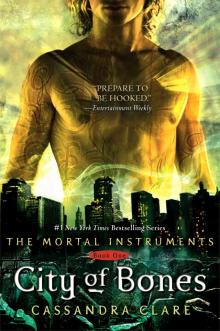 City of Bones
City of Bones Vampires, Scones, and Edmund Herondale
Vampires, Scones, and Edmund Herondale Bitter of Tongue
Bitter of Tongue What Really Happened in Peru
What Really Happened in Peru Shadowhunters and Downworlders
Shadowhunters and Downworlders Learn About Loss
Learn About Loss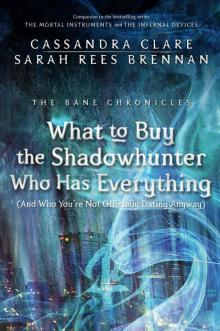 What to Buy the Shadowhunter Who Has Everything
What to Buy the Shadowhunter Who Has Everything Welcome to Shadowhunter Academy
Welcome to Shadowhunter Academy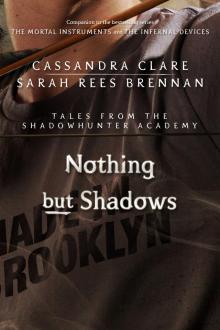 Nothing but Shadows
Nothing but Shadows Clockwork Prince
Clockwork Prince The Fiery Trial
The Fiery Trial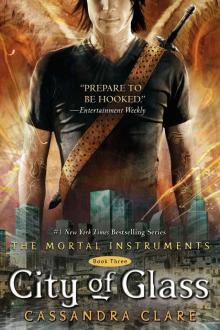 City of Glass
City of Glass Clockwork Angel
Clockwork Angel City of Heavenly Fire
City of Heavenly Fire The Rise of the Hotel Dumort
The Rise of the Hotel Dumort The Shadowhunters Codex
The Shadowhunters Codex Cast Long Shadows
Cast Long Shadows City of Lost Souls
City of Lost Souls Lady Midnight
Lady Midnight Lord of Shadows
Lord of Shadows The Whitechapel Fiend
The Whitechapel Fiend City of Fallen Angels
City of Fallen Angels Clockwork Princess
Clockwork Princess Queen of Air and Darkness
Queen of Air and Darkness Saving Raphael Santiago
Saving Raphael Santiago The Red Scrolls of Magic
The Red Scrolls of Magic City of Ashes
City of Ashes Pale Kings and Princes
Pale Kings and Princes The Runaway Queen
The Runaway Queen The Last Stand of the New York Institute
The Last Stand of the New York Institute A Long Conversation (The Shadowhunter Chronicles)
A Long Conversation (The Shadowhunter Chronicles) The Lost Book of the White
The Lost Book of the White Chain of Gold
Chain of Gold The Fall of the Hotel Dumort
The Fall of the Hotel Dumort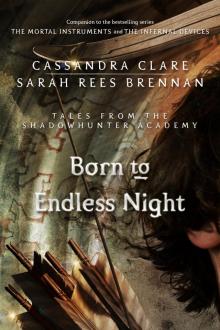 Born to Endless Night
Born to Endless Night The Lost Herondale
The Lost Herondale An Illustrated History of Notable Shadowhunters & Denizens of Downworld
An Illustrated History of Notable Shadowhunters & Denizens of Downworld Ghosts of the Shadow Market
Ghosts of the Shadow Market Through Blood, Through Fire
Through Blood, Through Fire Every Exquisite Thing
Every Exquisite Thing City of Fallen Angels mi-4
City of Fallen Angels mi-4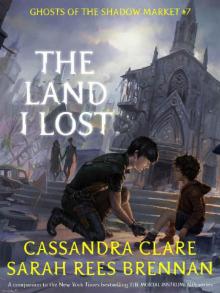 The Land I Lost (Ghosts of the Shadow Market Book 7)
The Land I Lost (Ghosts of the Shadow Market Book 7) Queen of Air and Darkness (The Dark Artifices #3)
Queen of Air and Darkness (The Dark Artifices #3) The Wicked Ones (Ghosts of the Shadow Market Book 6)
The Wicked Ones (Ghosts of the Shadow Market Book 6) The Wicked Ones
The Wicked Ones A Deeper Love
A Deeper Love City of Fallen Angels (4)
City of Fallen Angels (4) The Evil We Love (Tales from the Shadowhunter Academy Book 5)
The Evil We Love (Tales from the Shadowhunter Academy Book 5) Vampires, Scones, and Edmund Herondale tbc-3
Vampires, Scones, and Edmund Herondale tbc-3 City of Glass mi-3
City of Glass mi-3 Tales from the Shadowhunter Academy
Tales from the Shadowhunter Academy The Infernal Devices Series
The Infernal Devices Series City of Ashes mi-2
City of Ashes mi-2 Cassandra Clare: The Mortal Instruments Series
Cassandra Clare: The Mortal Instruments Series The Bane Chronicles 7: The Fall of the Hotel Dumort
The Bane Chronicles 7: The Fall of the Hotel Dumort The Last Stand of the New York Institute (The Bane Chronicles)
The Last Stand of the New York Institute (The Bane Chronicles) The Land I Lost
The Land I Lost![Saving Raphael Santiago - [Bane Chronicles 06] Read online](http://i1.bookreadfree.com/i1/04/03/saving_raphael_santiago_-_bane_chronicles_06_preview.jpg) Saving Raphael Santiago - [Bane Chronicles 06]
Saving Raphael Santiago - [Bane Chronicles 06] Clockwork Angel tid-1
Clockwork Angel tid-1 The Runaway Queen tbc-2
The Runaway Queen tbc-2 The Bane Chronicles
The Bane Chronicles City of Lost Souls mi-5
City of Lost Souls mi-5 Every Exquisite Thing (Ghosts of the Shadow Market Book 3)
Every Exquisite Thing (Ghosts of the Shadow Market Book 3) Shadowhunter’s Codex
Shadowhunter’s Codex Learn About Loss (Ghosts of the Shadow Market Book 4)
Learn About Loss (Ghosts of the Shadow Market Book 4)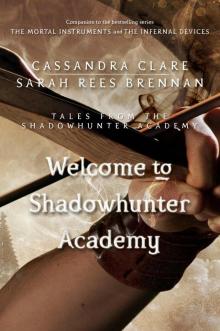 Welcome to Shadowhunter Academy (Tales from the Shadowhunter Academy Book 1)
Welcome to Shadowhunter Academy (Tales from the Shadowhunter Academy Book 1) Saving Raphael Santiago tbc-6
Saving Raphael Santiago tbc-6 City of Bones mi-1
City of Bones mi-1 Ghosts of the Shadow Market Book 1_Son of the Dawn
Ghosts of the Shadow Market Book 1_Son of the Dawn Clockwork Princess (Infernal Devices, The)
Clockwork Princess (Infernal Devices, The)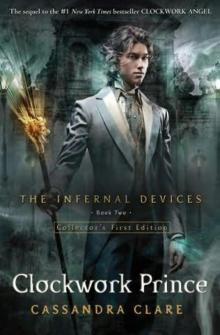 Clockwork Prince tid-2
Clockwork Prince tid-2 No Immortal Can Keep a Secret
No Immortal Can Keep a Secret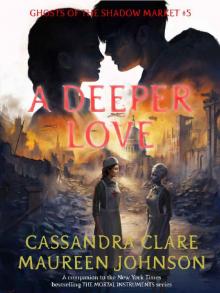 A Deeper Love (Ghosts of the Shadow Market Book 5)
A Deeper Love (Ghosts of the Shadow Market Book 5) The Course of True Love (and First Dates)
The Course of True Love (and First Dates)